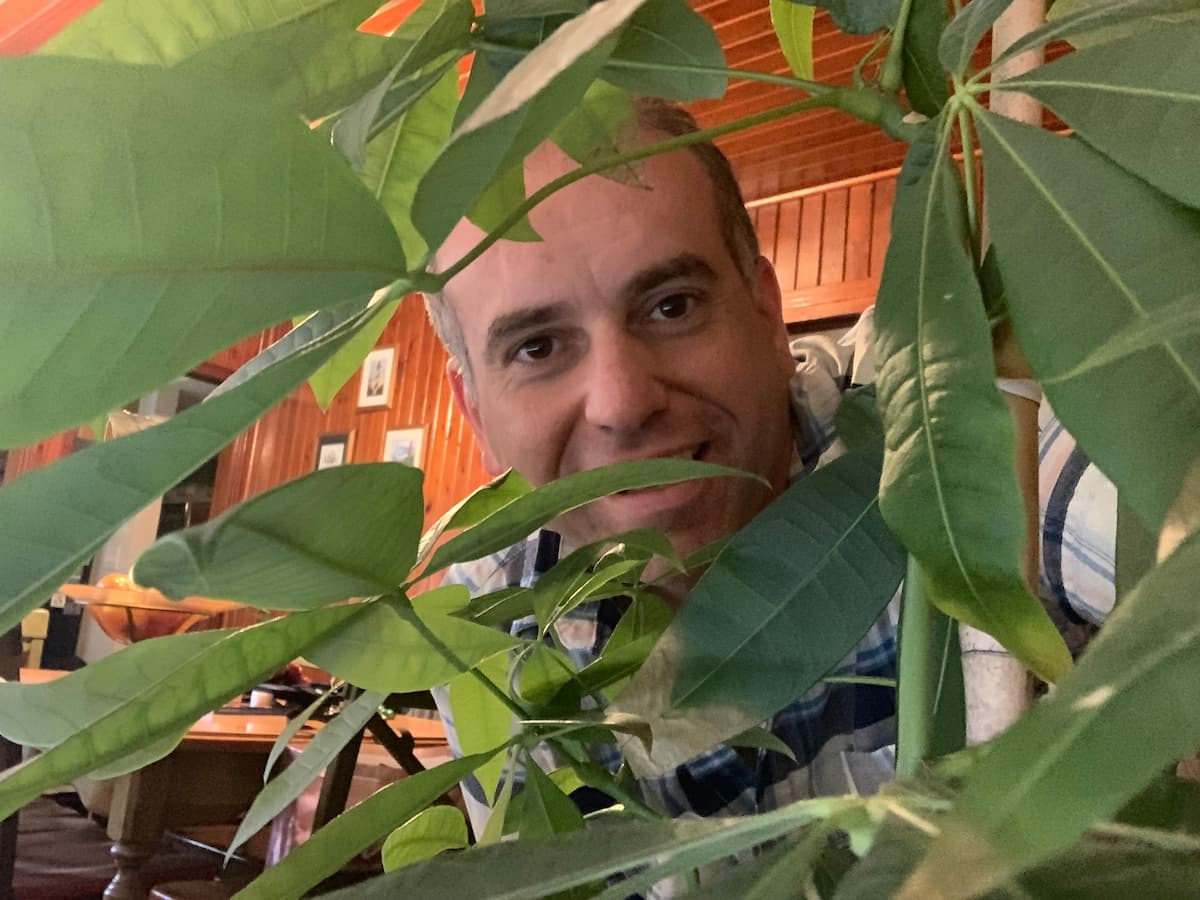I love money tree plants. They’re a tropical plant with roots as a swampland tree from Central and South America. These wonderful houseplants are widely sold at grocery stores, home-improvement warehouses, and elsewhere as the “money tree” or “money plant.”
Horticulturally known by the Latin name Pachira aquatica, the money tree is said to have gotten its whimsical nickname from legend. Lore says a poor man came across the unusual plant and made money propagating and selling saplings from its seeds.
I’ve not made any cash selling money tree plants, but my wife’s and my home certainly looks richer for the presence of ours. This plant was given to us as an Easter gift from my family in 2018. They know I love coin collecting, thus the “money” connection.
At the time our money tree was barely a foot tall and came in a 3″ wide pot. It’s since been repotted and now stands beyond four feet tall in the corner of our dining room.
Why Should You Buy Money Tree Plants?
Aside from the graceful beauty of the money tree, with its shiny green leaves and palm-like upright form, these popular plants can help make the air you breathe healthier, too. Money tree plants can remove volatile organic compounds (VOCs) from the air in your home. These VOCs are emitted from paints, furniture, cleaners, and other common household items. They’re also are linked to maladies like cancer, liver damage, eye irritation, and breathing problems.
Something else that makes the money plant great for your home? It’s a remarkably easy houseplant to take care of! Something I like about my money tree is that it’s not terribly fussy and it’s very low maintenance.
Tips For Taking Care Of Money Tree Plants
If you keep your money plant in a full-sun location, you should have success in growing it. It’s best to water your money tree when the top layer of soil just starts getting dry… I also like to place one or two Miracle-Gro plant food spikes about once a year right near the base of the plant. They work in keeping our plant growing well throughout the year without seeming to overfeed it.
Even still, there are a few issues that I have faced over the years in growing my money tree, including:
Yellow Leaves
If the air in your home is too dry, the leaves of your money tree can start to turn yellow. Don’t forget, these are tropical plants that love humidity! Ensure the soil isn’t too dry nor too wet. I’ve helped ward off more leaves from turning yellow by gently misting the plant with water from a spray bottle every few days.
Brown Leaves
Brown leaves are a sure sign that your money tree isn’t getting enough water. They can also indicate that the air in your home is too dry.
Dropping Leaves & Dropping Leaves
If the leaves are drooping, your money plant needs more water. However, if the leaves are dropping, it’s a sign that you need to correct the growing conditions immediately! Make sure your money tree gets enough sunlight and that moisture conditions are correct — not too wet or too dry!
Leaning Trunks
Ah, yes… You see, my wife and I had this problem for a while. Our money tree kept growing toward the window, toward the sunlight. We fixed this by rotating our plant every few days. However, one of the trunks was having trouble standing upright — it became kind of leggy. We tied it to a bamboo stake and it seems to be doing better now. Eventually, we’ll be able to remove the bamboo stake and it’ll be back growing on its own in no time.
Can You Grow Money Tree Plants Outside?
The quick answer? It depends… Where my wife and I live in Central Florida, we can’t really grow money tree plants outdoors. They’re best suited to USDA Zones 10-12, which includes parts of South Florida, Southern Texas, stretches of Arizona, Southern California, and Hawaii.
Money tree plants are so sensitive to cold conditions that frosts can be lethal to them. In fact, even cool nights in the 40s or 50s can shock them, causing the tree to lose its leaves. When my wife and I open our windows during cool days in the late fall through early spring, we notice our money tree tends to look less vibrant. So we’re careful not to open the windows right next to the plant when it’s too chilly outside.
Money plants prefer warm, humid environments with regular temperatures in the range of 60 to 75 degrees. However, very few places in the United States offer suitable weather conditions for money trees, which is why they do best indoors for most Americans.
